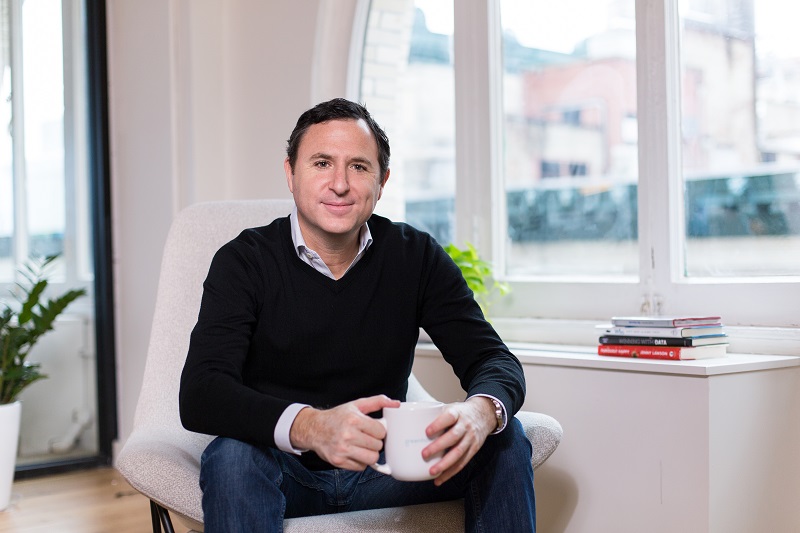Daniel Chait is the CEO and co-founder of Greenhouse, which provides hiring software to help thousands of companies worldwide become better at building a more diverse workforce. He discusses the issues that organisations face in recruiting and what actions they can take to be more inclusive.
What inspired you to set up Greenhouse?
Hiring talent is at the top of almost every executive’s list of priorities and at the bottom of every organisation’s list of capabilities. It’s one of the most important things to get right in almost every organisation today. Increasingly, businesses are about the people.
My co-founder Jon and I saw an opportunity to make progress in that area and create a lot of value. And here we are in year nine; we’ve got over 4,500 customers, and I’m really proud of what we’ve accomplished. But I feel it’s still very much early days – our mission is to help every company become great at hiring.
What are the issues that companies face when hiring?
They are numerous, and it’s not just about tracking, and that management doesn’t like the process and the paperwork. It’s much deeper than that; it gets to the core of who management looks for, how they choose who to move forward with and how they decide to make offers. Add how managers structure their interview process; they make candidates feel welcome, overcome their biases, both implicit and otherwise, and how they measure what’s important.
There seems to be more interest from companies in who they recruit. What is driving this?
Leaving aside what’s happened in the last year or two, I feel that the world has become much more open and transparent. For example, I’m 47, and when I graduated in 1995, I applied for jobs by mail and circled listings in the paper. I had no idea about the culture or leadership of the company I was joining, let alone the demographics. In stark contrast, only half a career later, individuals have so much information and transparency. People want to associate themselves and do business with organisations that they feel reflect their life, their values and what’s important to them. People want to work for companies that they feel they can get behind. There’s been a shift in power to individuals and their ability to hold the organisations they work for accountable.
Have you come across companies that are still reluctant to hire diverse talent?
It’s a big world out there. You have people who are genuinely saying that diversity is good. They are open-minded, even enthusiastic but have yet to connect the dots with the need to do something about it.
Then you have those who think that they’ll sponsor some scholarships but don’t see diversity as inherent to their business. In tech, you see people have more of a principled objection; they may say that they believe in meritocracy and want to hire the best and not lower the bar. That reflects an underlying misunderstanding of the problem and what they think they’re trying to solve.
An honest reflection of how a company recruits can be found in its attitude toward merit, which often permeates its hiring to promotion and recognition.
What do companies need to do to improve diversity in their hiring?
There are so many factors to overcome which require a range of activities and solutions. First, you need a real understanding of your goals and what your hiring process looks like. Many companies don’t have a structured hiring process; they do it on a candidate-by-candidate basis and can’t compare apples with apples.
If you have a structure – screening resumes, a phone interview, work assignments and face-to-face meeting – you then look at the demographics and numbers for each of those stages. Only by having the structure and data analysis can you identify the right interventions to overcome the problems. With unstructured face-to-face interviews – you see this a lot – everyone has a bias towards people that are similar to themselves. That can play out in race, gender or liking the same sports. If companies can overcome these irrelevant factors, they can hire talented people that they might otherwise screen out through bias.
How does Greenhouse help organisations with their hiring?
Greenhouse is built intrinsically to support a structured hiring process. It’s a more objective, efficient, scalable and results-oriented approach, which also has the benefit of helping to compensate and overcome some of the biases. That then sets the stage for data collection. It enables companies to collect tons of detailed data in their hiring process, including how candidates feel, the demographics of the candidate pools for different jobs and, ultimately, the parity or disparity between people that apply and how offers are made.
With our inclusion product, we have specific interventions designed to counteract the shortcomings. For example, often, individuals need reminding about what they’re in an interview to do. The more we can make an apples-to-apples comparison, put everyone through the same experience, the less biased the process will be.
Greenhouse has these features that show up on the screen of the interviewer. It will prompt them to back up their assessment with written notes. This has helped people to consider the evidence more objectively versus making rapid, push-button decisions.
Why do you think it’s important for workplaces to be more inclusive?
So often, I’ve seen barriers to people fulfilling their potential. When a talented, capable and motivated person can’t get the job they should, it has a massive impact on them and their family. Helping to overcome those problems is great for our customers; it helps them be more efficient and effective.
Tens of millions of people are interviewed every year on the Greenhouse platform. Every time I see a scorecard that tells me where someone was interviewed more fairly, with an even shot at getting the right job, it gives me solace knowing there are things we can do that truly matter and help people realise their potential. Ultimately leading to those businesses building better teams.
What advice would you give to organisations to improve their hiring processes and remove bias?
Number one: structure your hiring process. Don’t just leave it to chaos. Design the stages and have a scorecard to assess every candidate. Number two: collect data and understand the demographics of those applying for the jobs, the pass rates of different interviews and how many candidates and referrals you’re getting. Thirdly, when you get the team together to look at the short-listed candidates, structure the meeting to help them make more objective and fair decisions. Don’t count on the diversity training you had six months ago. Guide them in the moment, letting them know what information not to focus on. It can have a lot more impact.
You recently received a significant investment; how will this supercharge your work?
This investment came from TPG Growth and The Rise Fund. TPG Growth is about finding successful software companies operating at scale and giving them the capital they need to grow. And The Rise Fund is about sustainable social impact. We’re held accountable by our board and our investors to drive measurable social impact, which is a wonderful opportunity.
We plan to use this investment to continue pursuing our mission, finding more measurable ways to help our customers with hiring and impacting more and more organisations. That means expanding globally, serving larger and more kinds of customers and investing in R&D and product innovation so that we continue to make progress on the complex problems we tackle.







